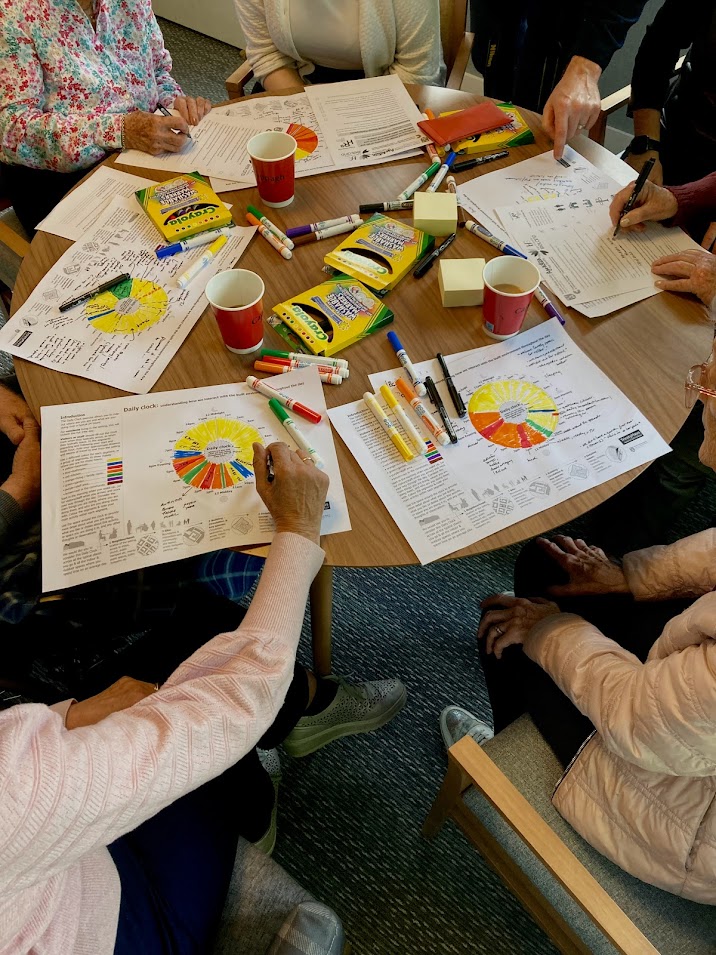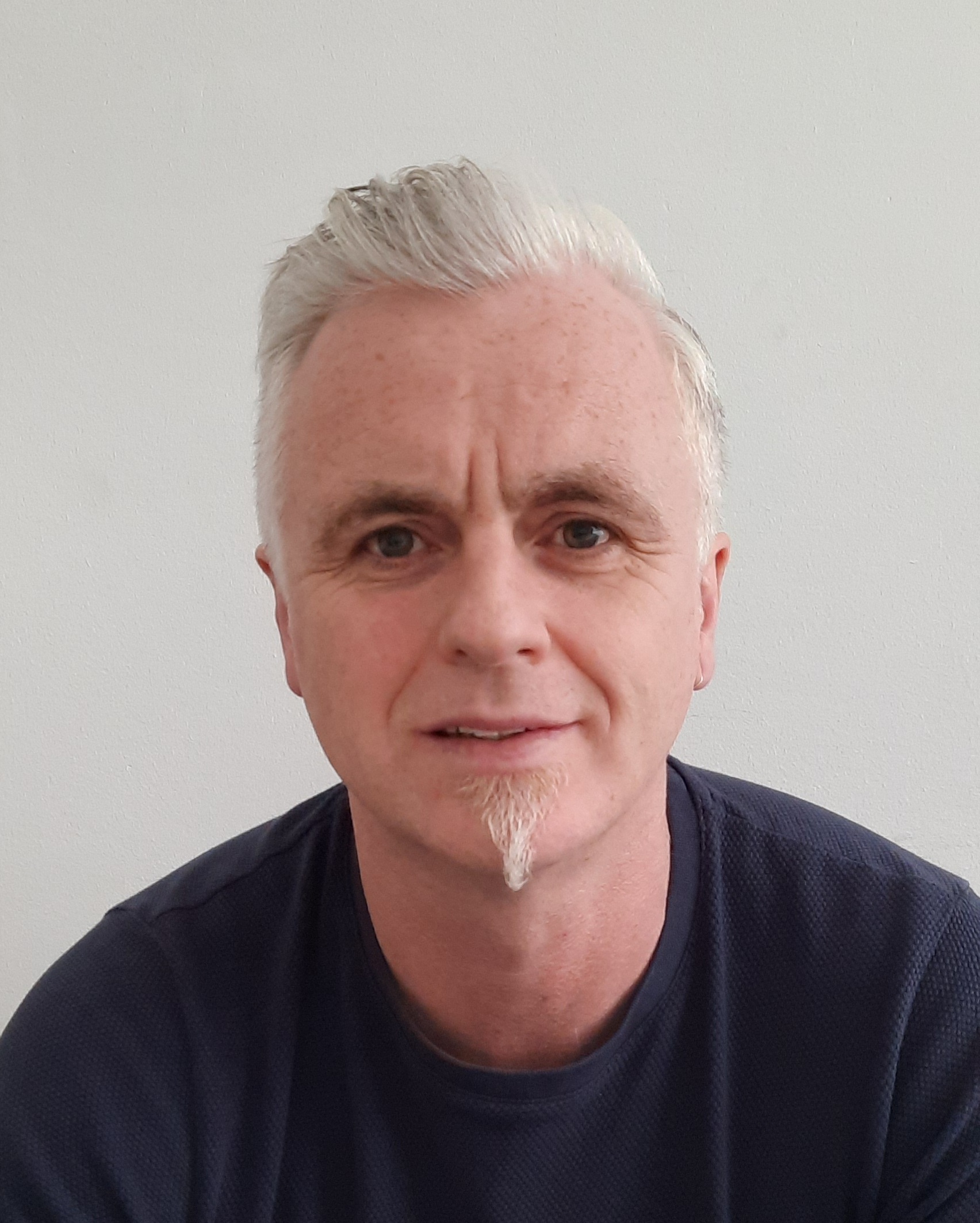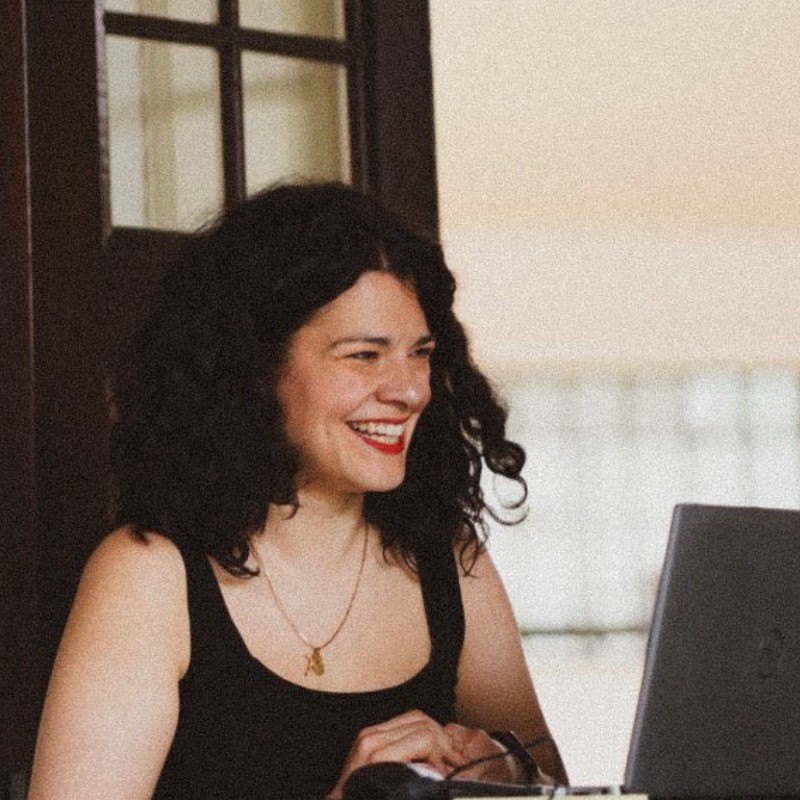TrinityHaus Research Fellows Thomas Grey and Dimitra Xidous on the Confluence of our Built Environment, Ageing, and Climate Action
The TrinityHaus mission has four key focus areas which are healthy and inclusive places, climate action and sustainability, construction and innovation, and co-creation and engagement. The last few years have led to an awareness of how these areas are interconnected, according to Grey: “It’s the idea that these issues are really embedded in the built and natural environments in towns and cities. We’re having very rich conversations with people about the confluence of these things. Where traditionally the aim was to either design space for a good quality of life, or sustainability and climate change, there has been more of a convergence of issues recently.”
Indeed, this convergence of issues is underscored by the makeup of TrinityHaus. While the research centre is part of the School of Engineering, they come from very different backgrounds. Xidous explains that she comes from a health policy, human rights perspective: “I’ve done a lot of work with Health Canada (the Canadian Federal Department of Health). And I'm also a practising artist. Tom’s background is in design, architecture and urbanism. This experience underpins many of our Universal Design projects, while his work in national and international building standards also helps frame some of the things we do.” The multidisciplinarity of the TrinityHaus team is further illustrated by another team member, Jennifer O’Donoghue, who has a background in psychology.
Their multidisciplinary approach enables them to open up their projects to expertise from across academia and industry: alongside TrinityHaus’s engineers, they also frequently work with Professor Des O’Neill from The Centre of Medical Gerontology in terms of age-inclusive design and Professor Marcus Collier from the School of Natural Sciences around ecological design. More recently collaboration with Professor Brian Lawlor and Dr. Eoin Cotter at the Global Brain Health Institute (GBHI) has led TrinityHaus towards looking at the impact of the built environment on brain health throughout the lifecourse.
“The built environment doesn’t involve just a few disciplines,” Xidous continues, “It's quite transdisciplinary. Co-creation also needs to be flexible, adaptable, and open to all kinds of views. It might be easier just to pick just a handful of disciplines and go down that track. But our approach is about capturing the depth and breadth of experience and expertise. And I think our outputs speak to that as well.”
Growing Older Urbanism and the Neighbourhood Scale
Taking their transdisciplinary approach to their research on the built environment, one scale that TrinityHaus is increasingly working at is the neighbourhood scale, focusing on its significance in terms of quality of life, considering how to define a neighbourhood, looking at how people live, interact, and engage with their neighbourhoods. The COVID lockdowns were particularly instructive in this regard as many people began rediscovering their locality. Low carbon neighbourhoods are also becoming more important.
For older persons, the neighbourhood is a particularly critical scale. “We talk about ageing in place,” Grey notes, “now we realise it’s also about ageing in your neighbourhood.” This has led them towards some very interesting projects; one project has generated a significant paper (published in April 2023), on the concept of growing older urbanism. This paper focuses on the built environment, people, nature and ecosystems, and recognising that nothing is static, that everything is dynamic, across space and time [1].
“As we grow and age our built environment is also changing,” he adds, “it's constantly being adapted and regenerated. Our communities are in flux and ecosystems and nature are also constantly growing, evolving, and changing.” The concept of growing older urbanism brought much of their work together: sustainability, people-centred design, the neighbourhood scale, and nature-based solutions. This has enabled them to consider a more holistic and sustainable approach in terms of inclusion, accessibility, and the bigger challenge of climate change, and they have drawn together many strands into a framework which “investigates this dynamic relationship, the nexus between us growing older, our neighbourhoods growing older, and also the natural world.”[1]
Human-Centred, Holistic Approach to our Quality of Experience
Indeed, it is evident throughout their research that people are their focal point. Xidous talks about how this often requires acknowledging and supporting people’s vulnerabilities: “In terms of the type of co-creation that we do, we are asking people to talk about their lived experiences, and in some cases that can be quite personal.” They conduct their work in a place of connection where engagement can be meaningful and long term. This relates to their holistic approach to research: “We're researchers. But we also recognise ourselves as people who are growing older and who continue to experience and rely on the built environment in myriad ways. We're all part of this journey and feel very connected to the work. We also want to acknowledge that there is a lot of wisdom and traditional knowledge in communities that can be harnessed and applied to some of the world's bigger challenges that we're dealing with today.”
To give one example of a bigger challenge, Grey discusses the importance of air quality in relation to the built environment and the wider quality of experience. For instance, while we have long known about sick building syndrome, in the last few decades this air quality related issue became eclipsed by a drive towards energy efficiency through air-tight buildings and controlled ventilation. COVID has helped focus attention again on air quality, as it is “very much about the air we’re breathing, and not so much about surface contamination. Previously air quality wouldn't have been hugely discussed in many sectors like long term residential care. Suddenly people realised, there's so many interconnections here. This isn't just about infection control, it’s about quality of life.” We are now beginning to see more international standards on how buildings perform in terms of health, as poor indoor air quality contributes to the spread of pathogens, as well as other bacteria. On a day-to-day basis, it can cause stress or drowsiness. “Now there’s lot of good work being done by our own colleagues in Civil, Structural and Environmental Engineering, around pollution and external and internal air quality, and this is an area where there will be more collaboration between TrinityHaus, Civil Engineering and other TCD colleagues into the future.”
A significant element of their approach is conducting research around long-term residential care settings for older people. Xidous and Grey, along with their colleague Jennifer O'Donoghue, are currently working on a large-scale project funded by the Health Research Board looking at these settings. The project was proceeded by a Science Foundation Ireland project looking at quality of life, the built environment and infection control, particularly relating to COVID-19. They have brought quite a few Irish partners and some international partners together to look at best practice in design and planning in Irish care settings.
Indeed, Xidous highlights that they frequently work with a large number of partners and often engage with the same groups across multiple projects: these include the Centre for Excellence in Universal Design (at the NDA), Age Action, Age Friendly Ireland, SAGE Advocacy, Care Champions, Nursing Homes Ireland, O’Connell Mahon Architects, as well as the HSE. They also collaborate with Trinity colleagues including with the Schools of Medicine, Natural Sciences, Business, and Social Sciences, as well as the Global Brain Health Institute.
On-The-Ground Experience in the Built Environment
 During a typical week on these projects, the TrinityHaus team visit these settings to work with people. “Our lab is the nursing homes, the streets, the squares, the hospitals,” Grey observes. He details how “we're in a nursing home here in Dublin this week, and we’ll go again next week. This will typically entail going in for a full day. In the morning we’d meet the director of nursing, have an initial conversation, and they would show us around. We’d prepare a lot of material in advance to host two focus groups: one with residents and one with staff. There might be 4 or 5 residents along with family members who would come together, and we have a number of engagement templates that we work through with them to understand their day-to-day experiences in the setting, their challenges and their care and social needs in these environments. These findings will be discussed with project partners and stakeholders before being fed into recommendations and design guidelines.”
During a typical week on these projects, the TrinityHaus team visit these settings to work with people. “Our lab is the nursing homes, the streets, the squares, the hospitals,” Grey observes. He details how “we're in a nursing home here in Dublin this week, and we’ll go again next week. This will typically entail going in for a full day. In the morning we’d meet the director of nursing, have an initial conversation, and they would show us around. We’d prepare a lot of material in advance to host two focus groups: one with residents and one with staff. There might be 4 or 5 residents along with family members who would come together, and we have a number of engagement templates that we work through with them to understand their day-to-day experiences in the setting, their challenges and their care and social needs in these environments. These findings will be discussed with project partners and stakeholders before being fed into recommendations and design guidelines.”
One important example of a co-creation tool that is framing the lived experience aspect of this project is a daily clock: “It’s a way of exploring where people spend their time over a 24 hour cycle, which helps demystify the professional language around built environment and helps people understand that we’re talking about your bedroom, corridors, dining rooms, public spaces, outdoor spaces, gardens. It's a circle broken down into 24 hours, and we are asking residents to colour so we can get a sense of a ‘typical day’.” This exercise provides a visual understanding of where people are during the day, and how much time they spend in different spaces. “The focus group discussions have been quite rich as well, because people aren't bogged down by more technical aspects.” They aim to hold 12 focus groups with the daily clock, which will feed into design guidelines for quality of life, dignity, resilience, and the future of infection control preparedness.
This on-the-ground approach makes TrinityHaus very unusual. Not only do they conduct their research and make sure it’s framed by user preferences, they also include the practical application within these built environment spaces. So, in many instances they also have guidelines, or otherwise implement their research findings.
Grey’s work with the National Standards Authority of Ireland, as well as European and International ISO standards, is particularly relevant in this regard. A lot of what he works on focuses on universal design, the built environment, and accessibility, he explains. This allows TrinityHaus to take their research and translate it into something useful in practice, making it “very concrete. It really helps you distil the work, helps make sure that there's a point to what you're doing.” It could become guidelines, policy, or standards: ultimately, their research has impact.
Future for TrinityHaus: Sustainability, Climate Impact, and At-Risk Populations
Looking towards their next research goals, they recently submitted a Horizon Europe proposal focussed on accessibility, and framed by the New European Bauhaus which connects the European Green Deal to living spaces and experiences. “We are very excited about the New European Bauhaus principles around sustainability, inclusion, and aesthetic (beauty, and quality of experience). When you think about it,” Xidous notes, “with a name like TrinityHaus, how could we not?”
Over the next couple of months they will develop an approach towards this quality of experience with some of their partners: “We're well placed to do that because of the design, health and co-creation background we bring,” adds Grey, “and we’ll be working with groups like children and older persons, really drilling into their experience to learn what it's like to wake up in the morning and get out of bed. Or come down the stairs, for an older person. That’s how you really start to understand how they experience their environment in a tangible way.” Currently under-examined is the impact of climate change on vulnerable persons and the role of the built environment. He gives the example of the recent flooding in Cork. “It’s far more frightening for a small child or an older person because they’re more at risk in many ways. That confluence between the built environment and at-risk populations is something we really need to pursue.”
Xidous and Grey clearly have a strong collaborative work ethic, which is evident in their conversation. Xidous stresses the relationship-building aspect of writing proposals and conducting project work together: “I think you have to be very lucky to have a good mix of people who can support each other, who have different strengths.” They have begun to schedule an hour every week to brainstorm and think strategically about TrinityHaus’s role in the year ahead. “It really helps to just be able to sit with your colleague and have that hour of reflection.”
Grey concurs, adding that “the continuous dialogue with our partners and the inhabitants of the spaces we’re researching is really important. We’re working with people at a fine level of detail, but constantly zooming in and out between the human scale, the building scale, the neighbourhood scale and beyond, as part of a wider systems approach underpinned by people-centred design, and a deep concern for the lived and embodied experience of place and nature over time”.[1] Grey, T., et al., Growing Older Urbanism: exploring the nexus between ageing, the built environment, and urban ecosystems. Urban Transformations, 2023. 5(1): p. 8
- Article written by Dr Sarah Cullen
Biographies
 Thomas Grey has a degree in architecture from the Dublin Institute of Technology and a Masters in architecture from the University of Auckland in New Zealand. He joined TrinityHaus Research Centre in 2009 after 10 years of experience worldwide. He has undertaken a variety of urbanism and architectural research projects examining how people-friendly design can support inclusion, health, wellbeing and social participation. Grey serves as expert and advisor o the National Standards Authority of Ireland and the BRE Sub-group on housing for our ageing population. He is also the convenor support as part of the creation of new international standard ISO 25553 Smart Multigenerational Neighbourhoods – Guidance and Requirements.
Thomas Grey has a degree in architecture from the Dublin Institute of Technology and a Masters in architecture from the University of Auckland in New Zealand. He joined TrinityHaus Research Centre in 2009 after 10 years of experience worldwide. He has undertaken a variety of urbanism and architectural research projects examining how people-friendly design can support inclusion, health, wellbeing and social participation. Grey serves as expert and advisor o the National Standards Authority of Ireland and the BRE Sub-group on housing for our ageing population. He is also the convenor support as part of the creation of new international standard ISO 25553 Smart Multigenerational Neighbourhoods – Guidance and Requirements.
 Dimitra Xidous has a Masters in International Health from Queen Margaret University, Scotland. She has a background in public health policy, with a focus on health and human rights and has worked with multi-lateral organisations and stakeholders, including WHO, PAHO, and the UN. As a Research Fellow with TrinityHaus for the last decade, she has been involved in various health and design research projects, including dementia friendly dwellings and hospitals, and has significant experience in participatory design and stakeholder engagement. She also has extensive experience in nature-based solutions, having been a WP lead in Connecting Nature, and involved in NBSEduWorld, and Urban Greening Plans Plus (2024-2026). She is also an artist and has published two poetry collections. She is an Executive Editor of SPROUT, an eco-urban poetry journal, run in partnership with The Nature of Cities. She is a co-founder and Director of EM PATH WAYS, a spin-out of Connecting Nature, is not-for-profit social enterprise that uses a range of people-centred co-production and engagement techniques to support sustainable community development and environmental protection.
Dimitra Xidous has a Masters in International Health from Queen Margaret University, Scotland. She has a background in public health policy, with a focus on health and human rights and has worked with multi-lateral organisations and stakeholders, including WHO, PAHO, and the UN. As a Research Fellow with TrinityHaus for the last decade, she has been involved in various health and design research projects, including dementia friendly dwellings and hospitals, and has significant experience in participatory design and stakeholder engagement. She also has extensive experience in nature-based solutions, having been a WP lead in Connecting Nature, and involved in NBSEduWorld, and Urban Greening Plans Plus (2024-2026). She is also an artist and has published two poetry collections. She is an Executive Editor of SPROUT, an eco-urban poetry journal, run in partnership with The Nature of Cities. She is a co-founder and Director of EM PATH WAYS, a spin-out of Connecting Nature, is not-for-profit social enterprise that uses a range of people-centred co-production and engagement techniques to support sustainable community development and environmental protection.

